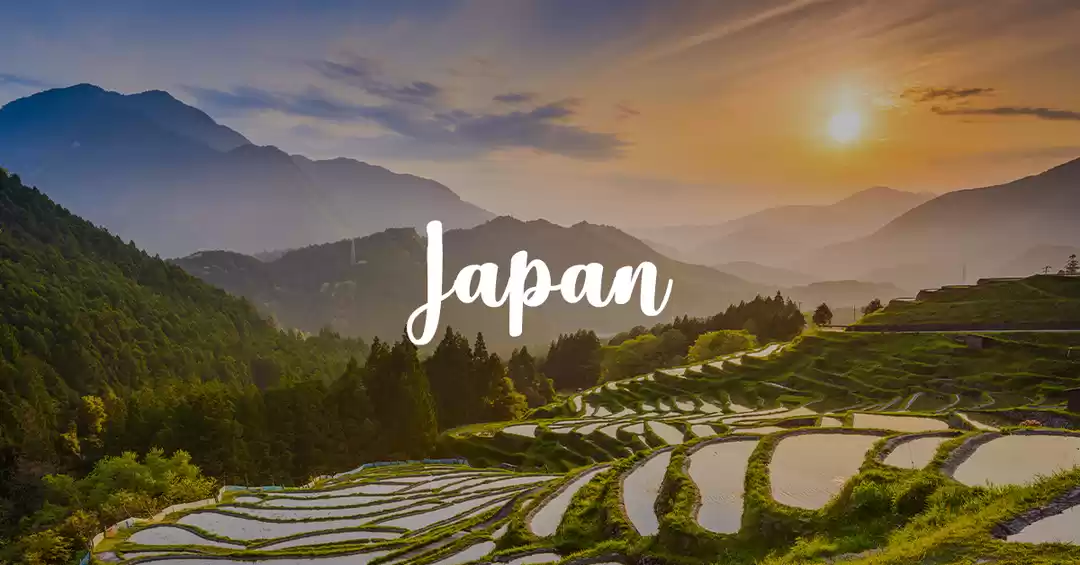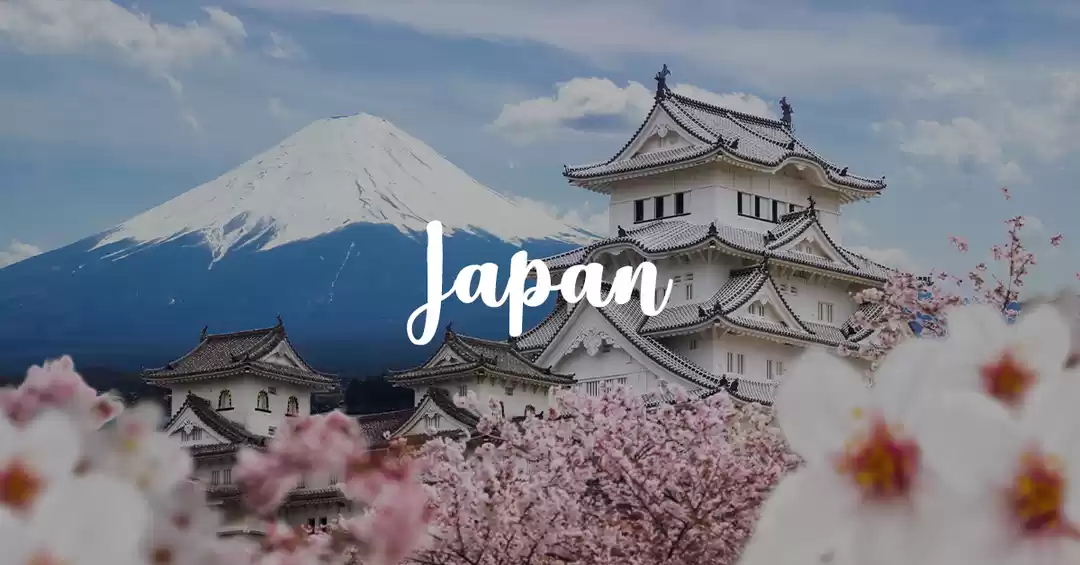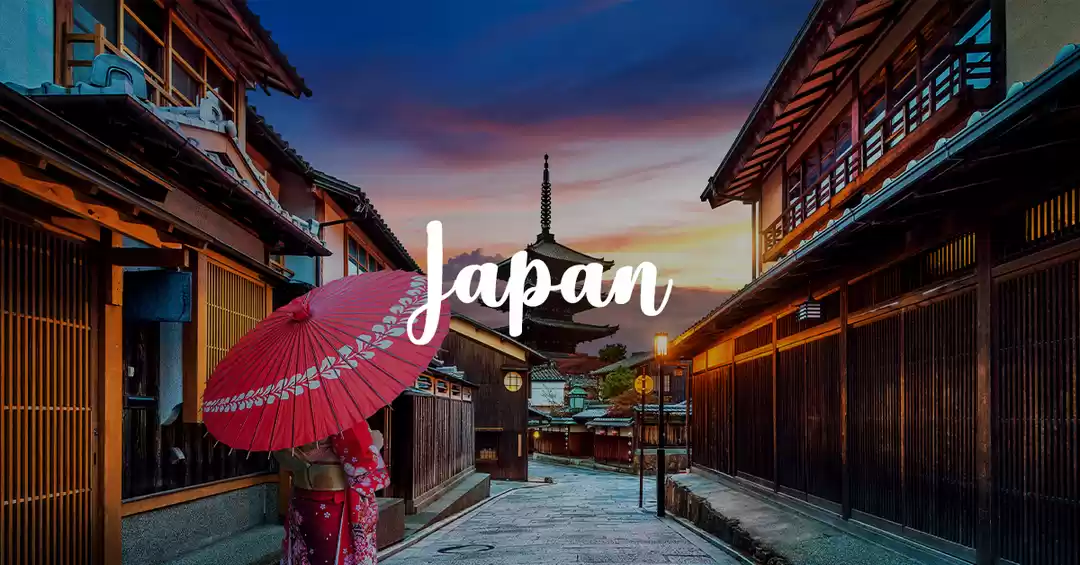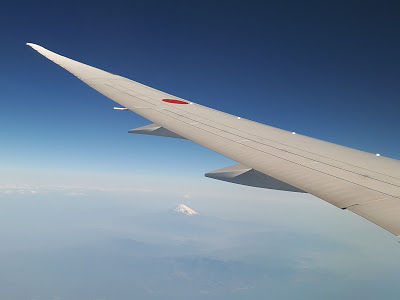
'Konnichiwa!!!'
As an Indian traveler it is believed the world is very rude towards us. We are made to believe that people from other countries are read to racially abuse us and probably throw us out of hotels.
Well... Japan shattered this image. And how !!!! Japanese people are one of the sweetest people I have come across on the Earth. Extremely humble, hard working and having an extreme care for convenience of others, Japanese people made us fall in love with this beautiful country.
Also, Japan is only expensive when you spend like a millionaire. Japan otherwise gives a lot of budget options for a backpacker budget traveler to enjoy !!!
Below mentioned is step by step guide to ten days in Japan. The itinerary is Jam packed with day to day activity to ensure maximum value for time allocated. :P
Japan is a country filled with contrasts between modern society and ancient traditions. Words of warning: This itinerary packs a lot in, and can feel a bit rushed. We think this would be ideally spread across 10 days.
April is often considered the best time to visit Japan because the cherry blossoms are in full bloom in most regions of the country and the weather is pleasantly mild.
Please note all expenses are inclusive of a couple (2 people) travelling together...
TOURIST VISA - Required Documents
1.Application with Photo - Application from website
2.Passport
3.Travel Booking (Travel itinerary and Hotel Booking); 4.Document to prove ability to pay for travel expenses - (a)Latest Income Tax Return; (b) Bank Statements of last 6 months
Visa Fees for Indian nationals:
Single or multiple entry visa: Rs.440 and Transit visa: Rs.40
Things to remember:
Tokyo, Japan is 3 hours and 30 minutes ahead of India
Most metro stations in Tokyo have English signs, but the system can get confusing. Get a free map beforehand in order not to get lost. Also, remember that public transportation isn’t working 24/7 in Tokyo, so catch the last train before 11pm.
As many streets have no name and not everyone speaks English consider renting a wireless router that will allow you to use google maps.
It can be surprisingly difficult to find an ATM that accepts foreign cards, even in Tokyo. The easiest place to get money is an ATM at 7-Eleven.
There is no tipping when eating out in Japan.
If you enjoyed your dining experience and want to express your gratitude or compliment the chef/service staff, a friendly "Gochiso-sama-deshita" will do.
You can get around almost everywhere in Tokyo with JR trains and Tokyo metro subway lines. Get a "Suica" or "Pasmo" rechargeable card, which you can also use at some shops.
If you need help with directions, you can probably find someone to assist you (in English) at a kōban police box, which you'll find close to most train stations.
Getting around without speaking Japanese is not as scary as you may think. Most people are helpful, and little phrases like "sumimasen" (excuse me) and "arigato" (thank you) go a long way.
Japan Rail Pass:
Information is on passes is available online at www.japanrailpass.net and www.japanrail.com.
Cost:36,000/- INR
• You can use the JR pass to travel between Tokyo, Kyoto, Hiroshima, and many other cities. The pass is good on virtually all JR routes, including the high-speed trains, but not on the ultra-high-speed Nozomi.
• Within Tokyo, you can use the pass on the JR Yamanote line, which makes a circle around central Tokyo, but not on the subways. Within Kyoto, the JR pass is practically useless. Within the Hiroshima area, the JR pass will take you to Miyajima.
• After you arrive in Japan, you exchange the voucher for a pass and set the date that the pass begins. When you do the exchange, you can get all your seat reservations. If you don't get a seat reservation, you can get on the train and find a seat (if available) in an unreserved car.
• With a Rail Pass, you can make seat reservations for free, which otherwise costs ¥510 ($4.25/£2.10) per ride on the Shinkansen.
• The rail pass entitles you to unlimited travel on all JR train lines including the Shinkansen (except, regrettably, the Nozomi Super Express), as well as on most JR buses and the JR ferry to Miyajima.
• The standard Japan Rail Pass is available only to foreigners visiting Japan as tourists and can be purchased only outside Japan.
• Upon purchasing your pass, you'll be issued a voucher (called an Exchange Order), which you'll then exchange for the pass itself after you arrive in Japan. Note that once you purchase your Exchange Order, you must exchange it in Japan for the pass itself within 3 months of the date of issue of the Exchange Order. When obtaining your actual pass, you must then specify the date you wish to start using the pass within a 1-month period.
• Once You've Arrived -- In Japan, you can exchange your voucher for a Japan Rail Pass at more than 40 JR stations that have Japan Rail Pass exchange offices, at which time you must present your passport and specify the date you wish to begin using the pass; most offices are open daily from 10am to 6 or 7pm, some even longer.
• At both Narita Airport (daily 6:30am-9:45pm) and Kansai International Airport (daily 5:30am-11pm), you can pick up Japan Rail Passes at either the Travel Service Center or the Ticket Office
Wi-Fi Rentals:
Operator: Pupuru Pocket Wifi Japan
Cost:6,000/- INR
Website: https://pupuruwifi.com
Any *normal* calls you make or receive will still be charged at your regular roaming rate so try to avoid if you wish to avoid high phone bills (Although the rented MiFi connection should be fast/good enough to make Skype calls if required)
Ensure that your smart phones own mobile data connection remains off as its not needed
Android device users with any 'widgets' on their home screens that require a data connection to update may utilise the data connection more frequently than iOS devices such as ipod/iphone/ipad
They deliver a device to your hotel or airport. At that time, they give a return envelope.
Return method is easy and useful. Just drop a device into mail box by using the envelope.
Any mailbox is OK. You can find it also at airports. If you have trouble, they will support you in English. The important thing is that you need to order at least 3 days before of pick up date.
Japan Suica Card
Cost:10,000/- INR
Japan’s Suica and Pasmo cards are your ticket to ride on Tokyo’s JR trains, private subway lines and Narita’s N’EX express airport train.
Add tap-and-go payment at railway kiosks, convenience stores, buses, taxis and even vending machines, plus other public transport systems in a dozen other parts of the country, and you can see why one of these prepaid ‘e-money’ cards is almost a must-have for business travellers to Japan.
Suica vs Pasmo: which card should you get?
There’s no real difference between Suica and Pasmo cards except that Suica belongs to Japan’s national train operator JR while Pasmo is offered supported by a number of private railway operators.
Each cards works on both train networks, and a variety of train and bus networks in other Japanese cities, so you only need one card to carry around.
You can pick up a Suica card for ¥2,000 ($A22) or a Pasmo for ¥1,500 (A$17) from smartcard ticket machines at most train stations in Tokyo.
Those prices include a refundable ¥500 deposit, so depending on which card you buy you’ll have either ¥1,500 or ¥1,000 as credit.
Train fares for shuttling around central Tokyo are fairly low, at between ¥160 and ¥170 (around A$1.85), so that balance should be enough for a few days.
When buying either card you’ll have the option to register it via the ticket machine’s touchscreen. It’s a quick process which means the card’s balance will be refunded if you lose the card.
ards work with other public transport systems across Japan
Topping up your Suica or Pasmo card
Your card's balance is displayed as you check through a turnstile, or you can just tap it on a vending machine without making a purchase.
To add value to your Suica or Pasmo card, look for a smartcard ticket machines at any railway station.
It’s a quick process but you’ll need to have a few Yen notes on hand (the minimum reload is ¥1,000) as the ticket machines don’t accept credit cards.
Getting a refund on your Suica or Pasmo card
When it’s time to head home, you can get a refund on the balance of your Suica or Pasmo card provided you have conversational Japanese language skills. Yes, there’s always a catch!
Just front up to the station manager’s office at any train station in Tokyo. A ¥210 processing fee will be deducted from your card’s balance but the rest, along with the ¥500 deposit, will be handed back to you in cash.
Landing and clearance by 10 AM
Airport to Shinjuku station- (10AM-11 AM)
Cost: 4000*2= 8000 yen (two Ways booked in advance)
Time required: 3 Hours (11 AM to 1 PM)
Blossom festival best place to visit and enjoy. Nearest JR station is Sendagaya Station. Bring your own picnic mat and snacks to enjoy the peaceful atmosphere. This park is a perfect jetlag-fighter and relaxation spot.
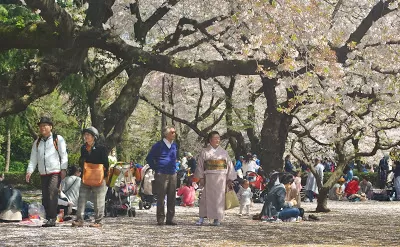
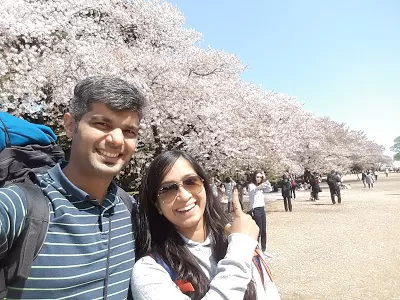
Time required: 3 Hours (2 PM-5PM)
Cost: 500*2= 1000 Yen
Line: Fukutoshin Line from Shinjuku station to Kita- Sando station
Take a break and familiarize yourself with the roots of Japan by exploring Meiji Jingu Shrine. The sight of this large wooden gate will guide you straight into the shrine.
For 500 yen, you can enter the ‘Treasure House’, and view many of the Emperor and Empress’ belongings, including their personal carriage.
If you continue farther up the road, you will see another torii gate to your left. The Inner Garden is hidden in the forest beyond the gate and is known to be a ‘power spot’, so you can upgrade your spiritual status (or something like that) while enjoying the view of a wide range of flowers, for an entrance fee of 500 yen. (Leave by 4.20 PM)
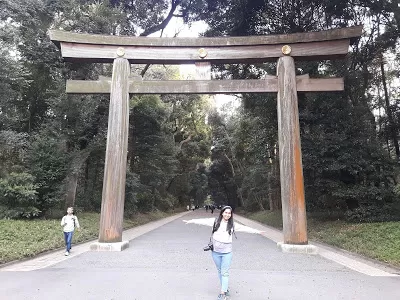
Time required: 1.5 Hours (5 PM-7 PM)
Line: Odeo Line from Tochomae station to Tokyo Metro Building
Survey the city 202m above ground from the observation deck of the Tokyo Metropolitan Government Building – on a clear day you may catch a glimpse of Mt Fuji. Come at dusk to catch spectacular sunsets and the city burst into neon-lit action. (Leave by 7 PM)
North Observatory: 9:30 to 23:00 and South Observatory: 9:30 to 17:30
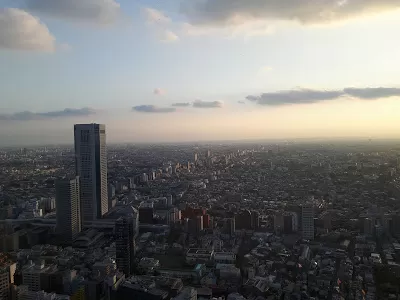
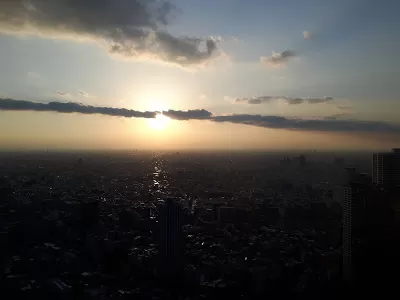
Time required: 1 Hour (8 PM-9PM)
Line: Oedo line - Tochomae Station to Aoyama-itchome Station; Hanzoman Line- Aoyama-itchome Station to Shibuya station
Every few minutes a wave of humanity flows across Shibuya Crossing. Join the masses or stand back and watch. An ideal vantage point is the bridge corridor linking Shibuya Station with the Shibuya Mark City complex.
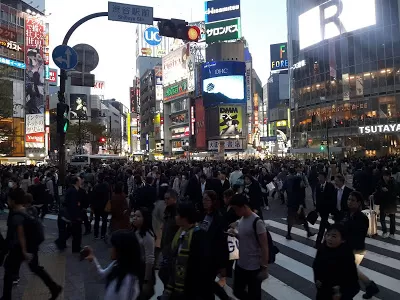
Time Required: 3 Hours (7 AM-10 AM)
Line: Oedo line from Higashi-shinjuku Station to Kuramae Station
Sensoji (浅草寺, Sensōji, also known as Asakusa Kannon Temple) is a Buddhist temple located in Asakusa. It is one of Tokyo's most colourful and popular temples. Nakamise is a long shopping street in front of Sensoji. Asakusa (浅草) is the centre of Tokyo's shitamachi (literally "low city"), one of Tokyo's districts, where an atmosphere of the Tokyo of past decades survives.
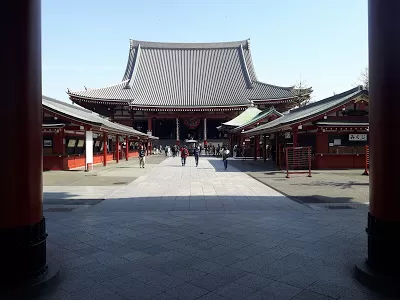
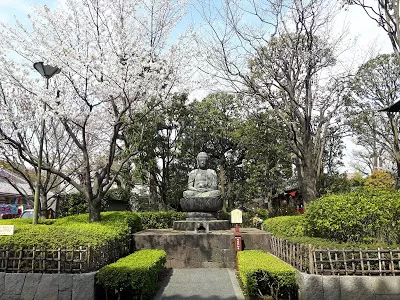
Time Required: 4 Hours (11 AM- 3PM)
Cost: 600*2= 1200
Line: Walk for 23 minutes
Japan's oldest and most expansive museum, the Tokyo National Museum hosts the largest collection of Japanese art and artefacts on the planet.
Strolling through the halls of its six buildings, you'll spot samurai armour, ornate swords, delicate pottery, decorated tombs, kimonos, calligraphy, paintings, and much more. These works and relics trace the history of the Japanese people. In addition, you'll find pieces from all across the continent in the Asian Gallery.
Located in the Taito neighborhood, the museum is easily reached on the metro. The most popular metro stop is Ueno Station because many lines intersect at it
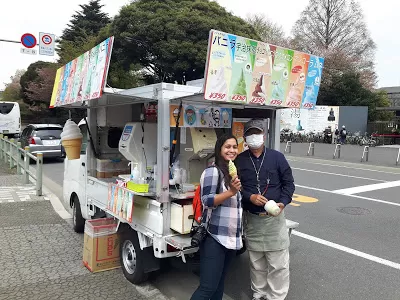
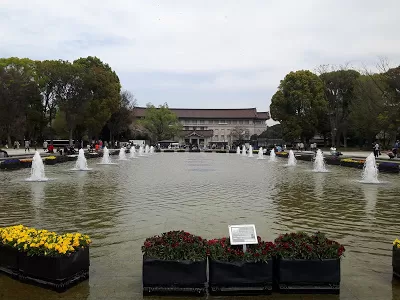
Time Required: 3 Hours (4 PM- 7 PM)
Time: 24 min walking
Akihabara (秋葉原), also called Akiba after a former local shrine, is a district in central Tokyo that is famous for its many electronics shops. In more recent years, Akihabara has gained recognition as the centre of Japan's otaku (diehard fan) culture, and many shops and establishments devoted to anime and manga are now dispersed among the electronic stores in the district.
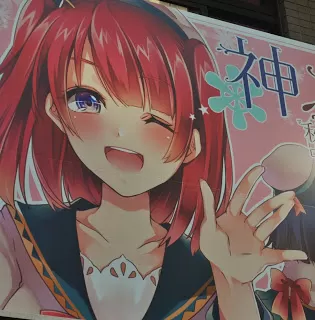
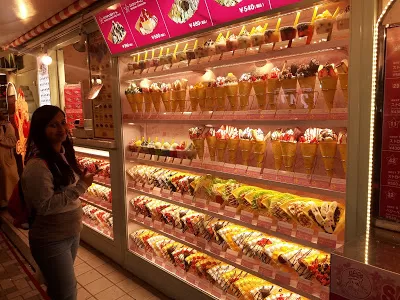
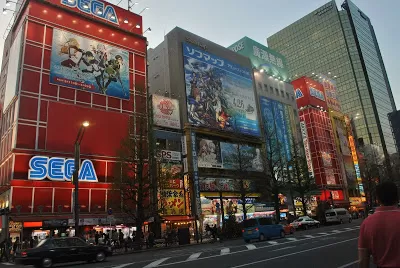
Time Required: 2 Hours (7 PM-9 PM)
Line: Hibiya Line - Kamiyacho Station to Tokyo tower
Do come back to the Asakusa area for Tokyo Skytree in the evening, preferably after its dark, for the stunning views of the city. Also a perfect place to end the trip and capture some snaps for awesome memories.
Standing 333 meters high in the centre of Tokyo, Tokyo Tower (東京タワー) is the world's tallest, self-supported steel tower and 13 meters taller than its model, the Eiffel Tower. A symbol of Japan's post-war rebirth as a major economic power, Tokyo Tower was the country's tallest structure from its completion in 1958 until 2012 when it was surpassed by the Tokyo Skytree.
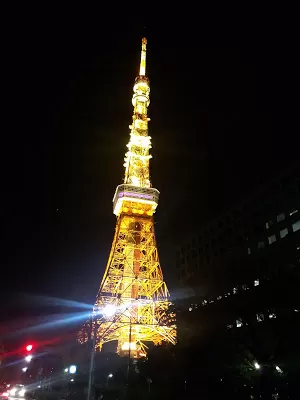
Line: Marunouchi Line - Shinjuku-sanchome Station to Otemachi Station
The East Gardens are made accessible for guests year-round. This flourishing green space has plenty of shady spots in which to recline and open fields in which to picnic.Visitors are free to explore the East Gardens anytime between 9 a.m. and 4:30 p.m.
To reach the Imperial Palace and its grounds, take the Chiyoda, Tozai, Marunouchi, Hanzomon or Mita subway lines to the Otemachi Station.
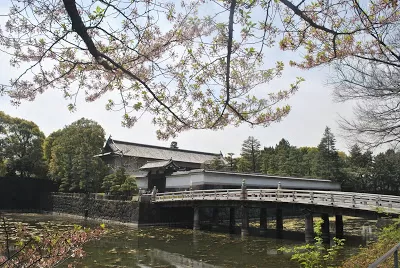
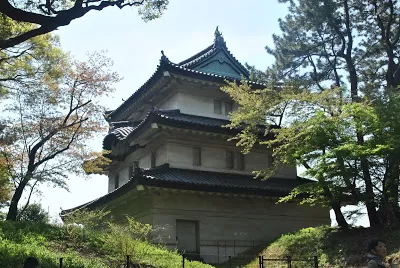
Line: Yamanote Line- Harajuku Station to Ebisu Station; Saikyo Line- Tokyo teleport station
Odaiba (お台場) is a popular shopping and entertainment district on a man made island in Tokyo Bay.
Several lavish development projects did materialize, including some of Tokyo's boldest architectural creations, such as the Fuji TV Building, Telecom Center and Tokyo Big Sight. Modern city planning furthermore provides Odaiba with plenty of green space and a pleasant division of motorized and pedestrian traffic using elevated walkways and the like.
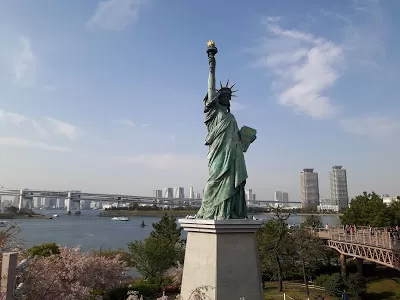
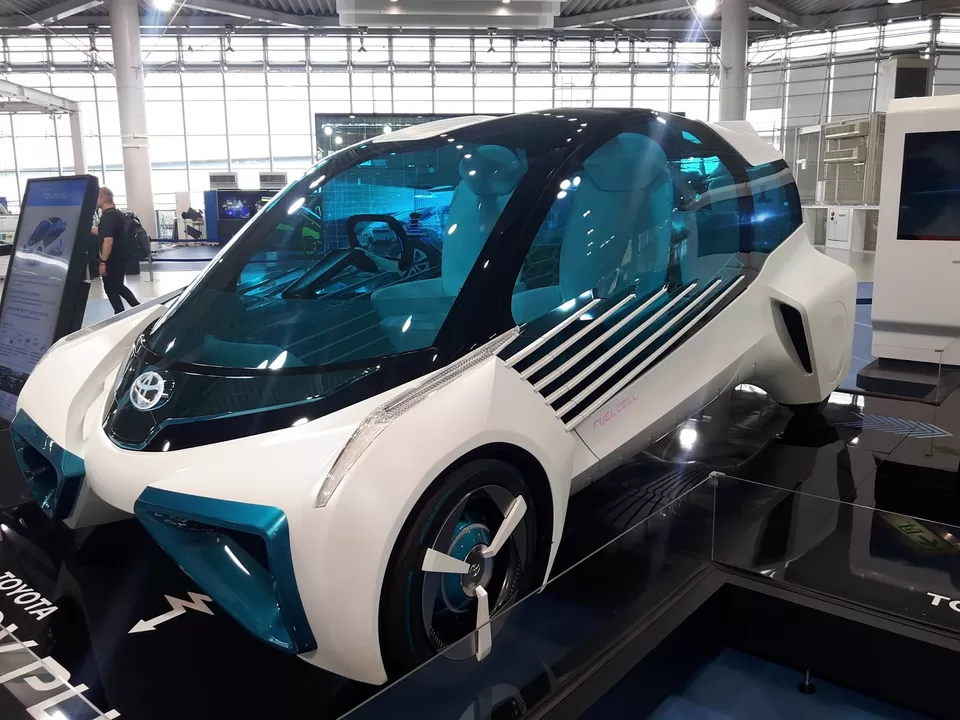
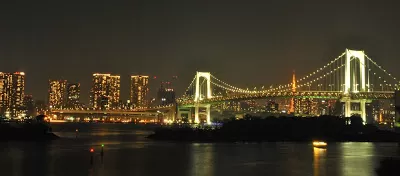
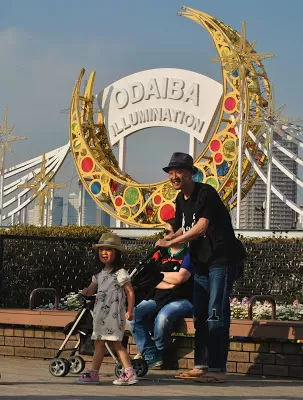
Line: Marunouchi Line- Shinkuju Station to Tokyo Station; Tohuku Shinkasen Line- Tokyo Station to Utsunomiya Station; Nikko Line- Imaichi Station
By Japan Railways (JR)- Take the JR Tohoku Shinkansen (from Tokyo or Ueno Station) to Utsunomiya Station and transfer to the JR Nikko Line. With a good connection at Utsunomiya, the one way trip takes about 100 minutes.
After exiting the train station, head to the bus stop to catch the 9:00am bus #2A towards Yumoto Onsen. If you have a JR pass then this bus is covered in the pass, else the ticket costs ¥1,350 for one-way ride.
It was a one hour bus ride from the Tobu-Nikko station to Ruyzu-no-taki bus stop, and another two minutes walk from the bus stop to the falls. Located upside of the Yugawa River which makes its way into Lake Yunoko and Lake Chuzenji, Ryûzu fall has a very unique shape. The name, Ryuzu, can be translated as “Dragon’s Head’, and is so named because its twin falls are said to resemble a dragon’s head. The total height of the falls is 60 meters (197 feet).
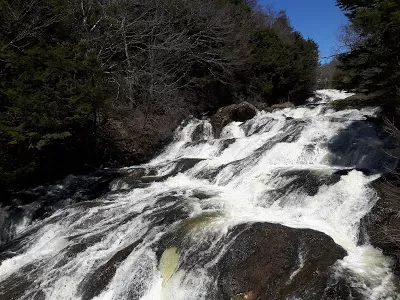
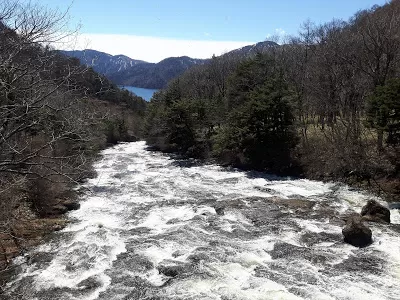
From Kegon Waterfalls, it’s a five-seven minute walk to the high-elevation lake created 20,000 years ago by the eruption of Mt. Nantai.

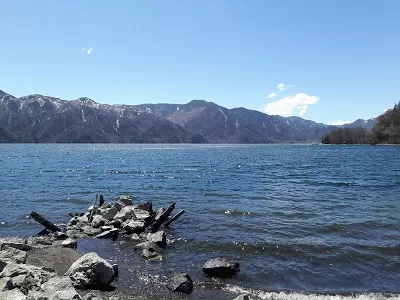
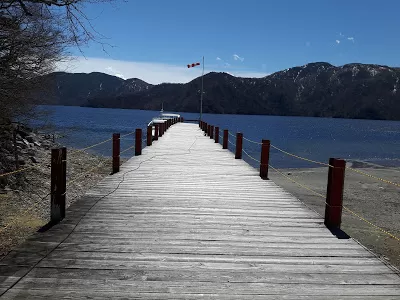
Jump on the next bus towards Tobu-Nikko station and got off at Shinkyo Bridge bus stop, from where we walked for about 10 minutes uphill to reach this World Heritage site – Tosho-gu Shrine
Costs – ¥1,300 for adults, ¥450 for elementary and middle-school students.
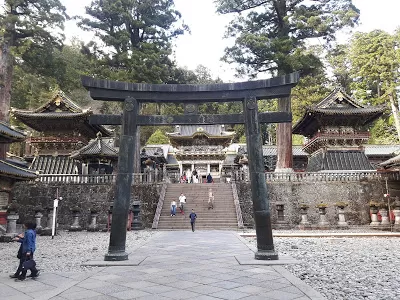
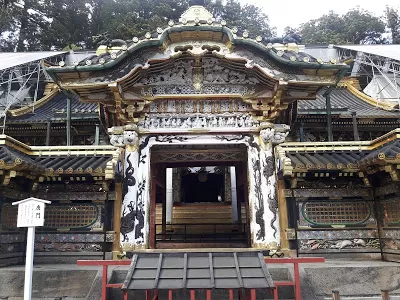
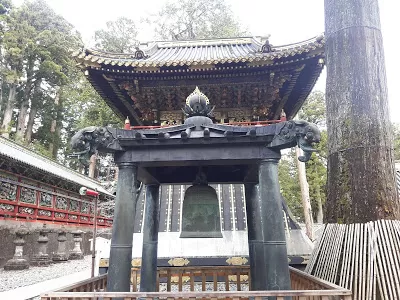
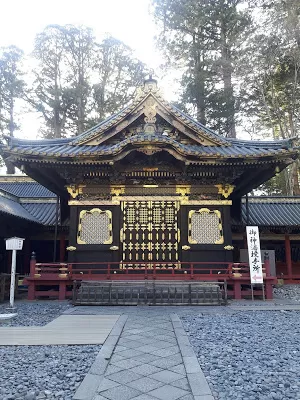
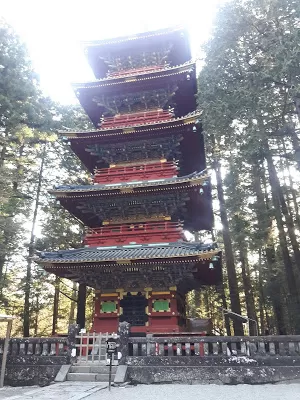
Morning: Using your JR Pass, travel via Shinkansen (Tokaido Like- bullet train from Tokyo or Shinagawa Station) to Odawara and grab a Hakone Free Pass for 4000 yen.
Yunessun
· Hakone Tozan Railway to Gora (35+ min) 10:30-11:10am
· Hakone Tozan Cablecar to Sounzan (10 min) 11:10-11:20am
· Hakone Ropeway from Sounzan to Owakudani (10min) 11:20-11:30am
· Visit the Great Boiling Valley (1.5hr at most; extra time in case of missed trains) 11:30am-1pm
· Hakone Ropeway to Togendai (20min) 1-1:20pm
· Cruise at Lake Ashi to Hakone-machi (30 min) 1:20-1:50pm
· Walk or continue cruise to Moto-Hakone (25 min) 1:50-2:15pm
· Visit Hakone Shrine (may skip this if required) 2:15-3pm
· Walk a section of the Old Tokaido and catch a bus from the Amazake Chaya or Hatajuku back to Yumoto (by bus line K).
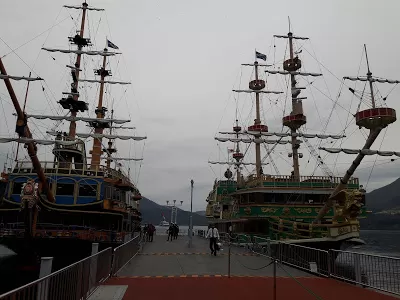
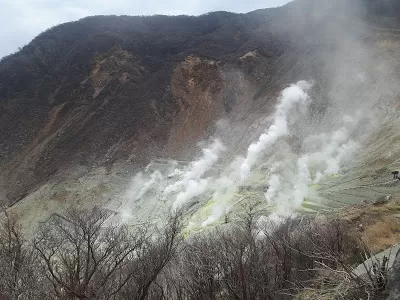
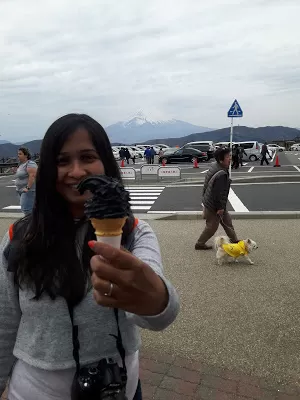
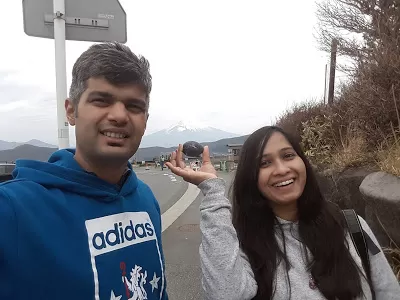
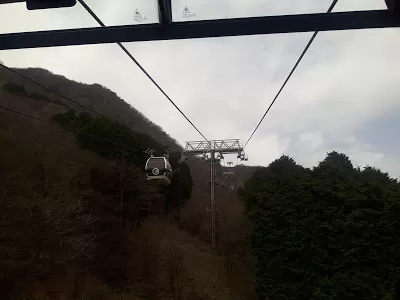
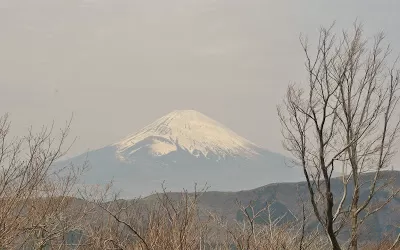
Activate JR Rail pass- Day 3
TOKYO [ Departure track No.16 ] – Time: 6.15 Hikari 501, Kyoto Arrival- 9.15
Kyoto is the cultural and traditional capital of Japan and there is much to find in this regard, think about temples, Zen gardens, the imperial castle, geisha’s and samurai.
10 am: Head up to Kiyomizu-dera Temple. Sure, it’s mercantile and touristy, but it’s also beautiful and it’s got a great view over the city. By going early, you’ll beat the daily crowds. Whatever you do, don’t forget to enter the subterranean Tainai-Meguri.
11 am: Walk down Sannen-zaka and Ninen-zaka, two preserved streets, to Maruyama-koen Park to enjoy some greenery.
12 am: Walk through Chion-in Temple but don’t linger, since it’s under construction.
1.30 am: Enter Shoren-in Temple and enjoy a cup of tea overlooking the garden.
2.30: Get on the Tozai Subway Line at Higashiyama Station and get off at Kyoto Shiyakushomae (downtown).
3 : Eat lunch downtown and explore Nishiki Market and the food floor at nearby Daimaru Department Store.
3:30pm: Take the Keihan Line to Fushimi-Inari Station and walk to nearby Fushimi-Inari Taisha Shrine. Climb as far up the mountain as your energy permits.
Dusk: Return to your hotel and relax and freshen up.
Evening: Eat dinner downtown, then walk over to Shimbashi in Gion and keep your eyes peeled for geisha.
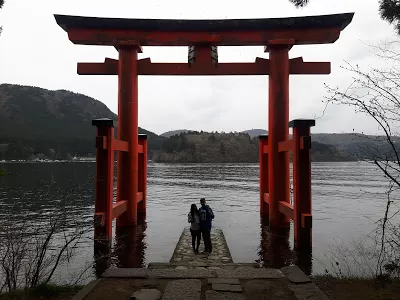
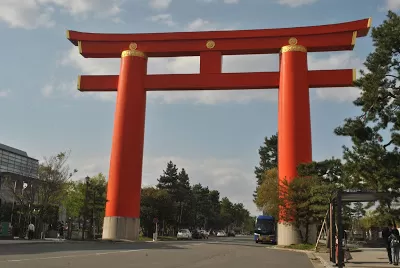
Activate JR Rail pass- Day 4
KYOTO [ Departure track No.8 ] 6 AM - JR Nara Line Local for NARA- 7.20 AM
JR Nara Line: Y690, 45 minutes by express (kaisoku), 70 minutes by local (futsu), departs from JR Kyoto Station in Kyoto and arrives at JR Nara Station in Nara
You’ll most likely start this itinerary at Kintetsu Nara or JR Nara Stations. Either way, get yourself to the fountain just up the stairs from Kintetsu Nara Station to begin this walk.
Walk up Nobori-oji Street. You’ll start to encounter Nara’s famous sacred deer as you go.
Use the underground crossings to get to the northeast corner of the Nobori-oji/Route 169. Walk from there to Isui-en Garden. If you have time, pop into the free and excellent Yoshiki-en next door.
Walk from Isui-en along the backstreets to Todai-ji Temple. Before entering the Daibutsu-den Hall to see the Great Buddha (Daibutsu), walk a little south to check out the Nandai-mon Gate, with its two huge guardian figures.
Enter the Daibutsu-den. Take your time marveling at the Daibutsu and then exit the Daibutsu-den.
Walk along the east wall of the Daibutsu-den and then go up the path that turns up to the right just past the small pond to reach Nigatsu-do Hall.
Check out Nigatsu-do and then walk in the direction of the base of Wakakusa-yama. If you’re traveling at a normal pace, you’ll probably reach this area around lunchtime. See my list of Places To
Eat In Nara for some lunch picks in this area.
Follow the narrow pathways through the forest to Kasuga-Taisha Shrine.
Follow the main path from Kasuga-Taisha all the way west until you reach Kofuku-ji Temple. If you haven’t eaten lunch yet, you’ll find lots of place in the shopping streets nearby (in Downtown Nara and Naramachi)
In the afternoon, make a loop south through Naramachi, checking out Sarusawa-no-ike Pond, Koshi-no-Ie and the shops and galleries of the area.
Return to your lodgings or one of the main train stations.
Activate JR Rail pass- Day 5
KYOTO [ Departure track No.13 ] 7 AM HIROSHIMA [ Arrival track No.12 ] 9.10 AM- SHINKANSEN HIKARI 491
Start/9:30am: Hiroshima Station- After arriving at Hiroshima Station, grab a map at the Tourist Information Center in the station and maybe a cup of coffee. Then, leave via the south exit and head to the street tram stop in front of the station (make sure you have some change to cover the Y160 fare). Take tram #2 or #6 and get off at Genbaku-domu-mae (A-Bomb Dome) about 10 minutes later.
9:45am: Atomic Bomb Dome- You can easily see the famous Atomic Bomb Dome from where you get off the tram. Take some time to observe this sobering sight, then cross nearby Motoyasu-bashi Bridge across the Motoyasu-gawa River and enter the Peace Memorial Park.
10:30am: Hiroshima Peace Memorial Museum- I suggest heading straight through the Peace Memorial Park to the Peace Memorial Museum because you want to get there as early as possible to avoid the crowds that descend on the museum as the day progresses. Allow about 90 minutes to explore the museum thoroughly.
Return to Hiroshima Station- To reach the ferry port from Hiroshima Station, take the JR Sanyo Line to Miyajimaguchi Station (25 minutes, 410 yen one way, covered by the Japan Rail Pass).
Arrive Miyajima - Upon arrival on the island, it’s very easy to get oriented. Just walk south along the shoreline in the direction of the famous “floating shrine gate.” Walking from the pier, this means going to your right.
12 PM : Itsukushima-jinja Shrine- Take some time to explore Itsukushima-jinja Shrine and pose for the obligatory photo of yourself with the floating shrine gate in the background.
1:00Pm: Daisho-in Temple- From Itsukushima-jinja, it’s an easy 10-minute walk up to Daisho-in Temple. It’s clearly marked and you can usually just follow the crowds. Take a good hour to explore the temple.
2 PM : Momiji-dani-koen Park- After lunch, follow the small Mitarai-gawa River up into Momiji-dani-koen Park. Mt. Misen via Miyajima Ropeway- Continue up the valley, following the river, to reach the base station of the Miyajima Ropeway. Take the gondola/cable car up to the top station, near the summit of Mt. Misen. Walk from the top station for about 30 minutes to reach the true summit and check out the temples, shrines and views there. From the Niomon Gate down to Daisho-in Temple takes about an hour.
4pm: Finish in the village- If you walk down from Mt. Misen at a leisurely pace, you’ll be back in the village around 4pm. If you’re staying the night on Miyajima, return to your lodgings. Otherwise, head to the piers for a ferry back to the mainland (Hiroshima Peace Memorial Park or Miyajima-guchi and on to Hiroshima).
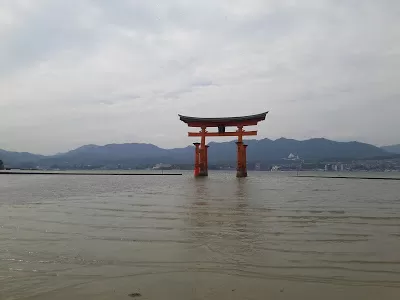
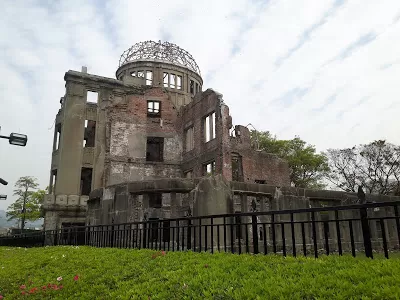
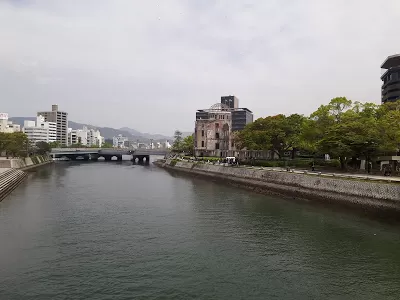
Activate JR Rail pass- Day 6
8:30am: Head west to Arashiyama by taxi, train or bus.
9:00am: Enter Tenryu-ji Temple and explore the temple.
10:00am: Leave Tenryu-ji Temple by the north gate, which will bring you into the famed Bamboo Forest. Explore the Bamboo Forest for about half an hour.
10:30am: Leave the Bamboo Forest and enter Okochi-Sanso Villa.
11:30am: Leave Okochi-Sanso Villa and return to central Arashiyama. Eat a simple lunch of noodles or rice in one of the shokudo (simple eateries) on the main strip.
12:30pm: Take a taxi over to Kinkaku-ji Temple, the famed “Golden Pavilion” in Northwest Kyoto.
1:00pm: Explore Kinkaku-ji Temple. Yes, it will be crowded at this time, but it almost always is.
2:00pm: Take a taxi down to Daitoku-ji Temple and enjoy the peace and quiet of a small subtemple there. Consider Koto-in Temple
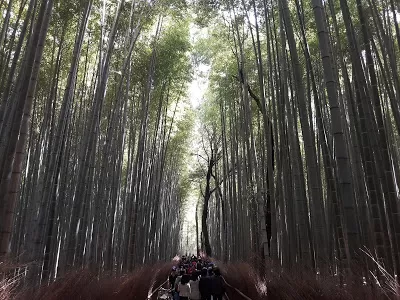
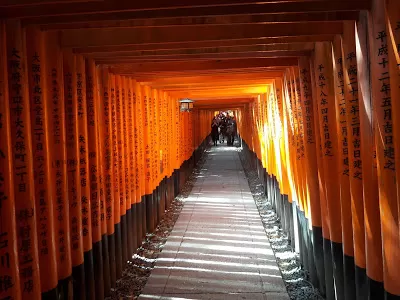

The Himeji Castle is built in the 17th century where the technology of the original castle construction is said to be at the zenith of Japan technology.
It is designated as a UNESCO World Heritage site in 1993, the very first in Japan. Its elegant finished with white lime plasters had always been compared to the flying white egret (Hakuro). To the locals, it is sometimes also known as the Hakuro Castle. Recently the castle is reopened in 2015 after a 5 and a half years renovation, now it is the time to visit this amazing castle.
The architecture itself is one to marvel with and to be studied closely when one had the chance. Though the entrance fee is quite steep at 1000 yen in 2015. Visiting this castle extensively would easily take half a day.
Direct JR special rapid trains (shin-kaisoku) take 90 minutes and cost 2270 yen for the one way trip between Kyoto and Himeji. There are departures roughly every 15 minutes.
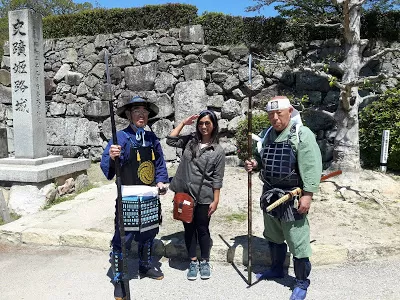
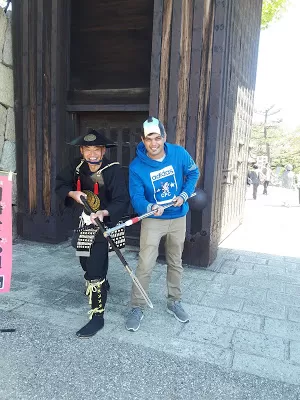
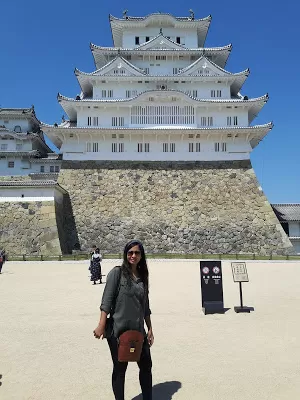
If you’re traveling by subway, the closest station is Tsukiji Shijo Station on the Toei Oedo subway line, and second closest is Tsukiji Station on the Tokyo Metro Hibiya subway line (a few minutes’ walk).
Tokyo Skytree- Explore Akhiabara-
Roam around missed locations or shopping locations at Tokyo
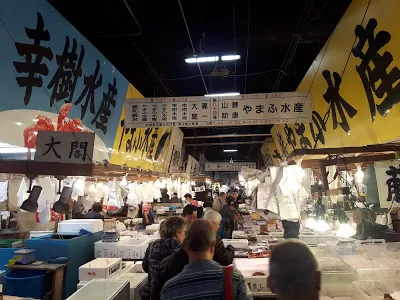
Japan leaves you spell bounded with an overload of experience but leaves you wanting for more.
When you believe- Things Happen

Thanks for reading and happy travelling :)
* Do visit our blog www.alifeinslowmotion.com for other travel stories as well :
Frequent searches leading to this page:-
trip to japan from india, how much does it cost to go to japan for a week from india, is japan expensive for indian tourists, india to japan trip cost



